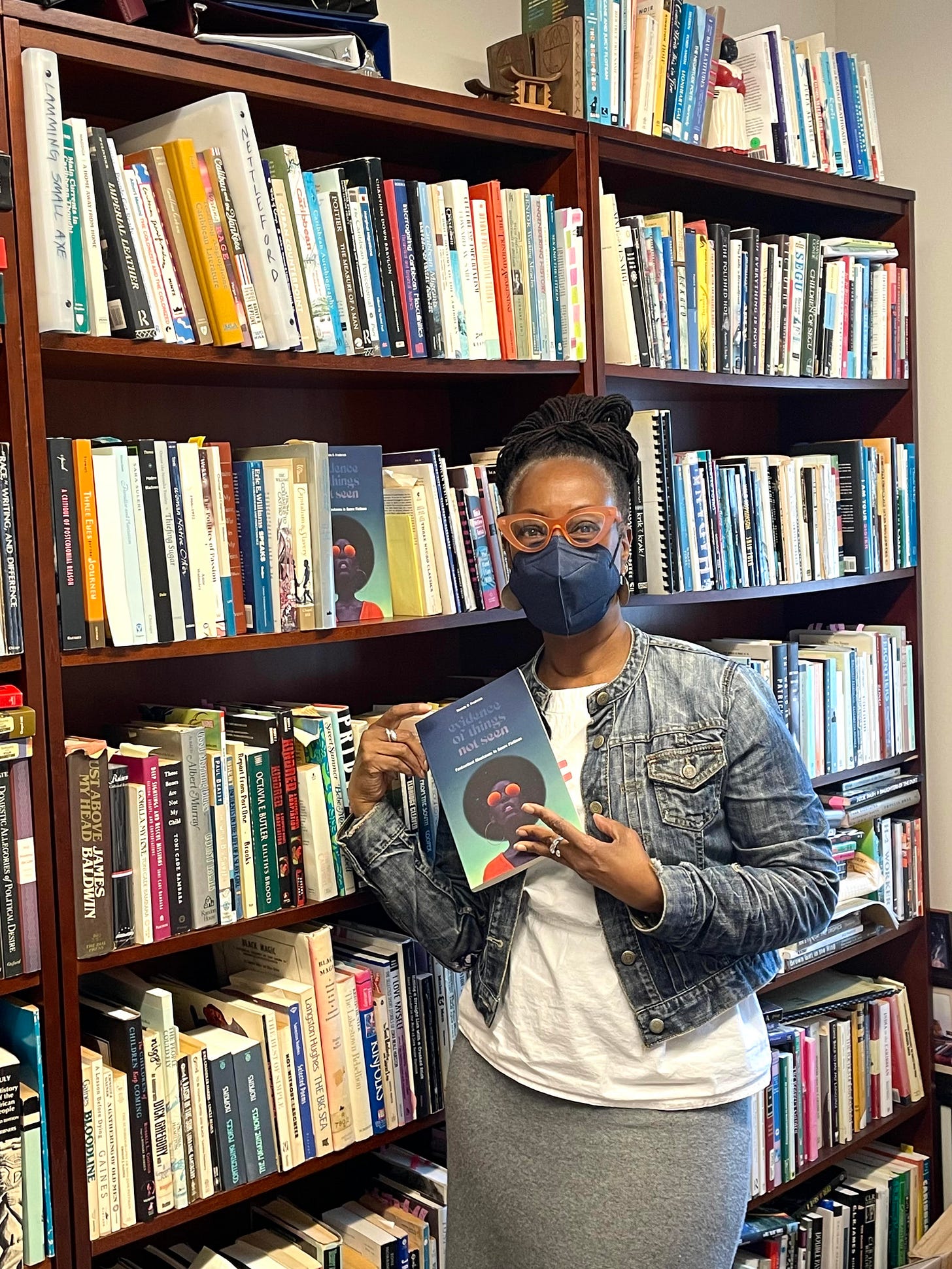Professor Spotlight: Rhonda Frederick
Welcome to a new series highlighting English Department professors and graduate students!
Name: Rhonda Frederick
How long have you been teaching at BC: since August of 1998, 27 years this summer!
Fun fact: I have 8 piercings and 2 tattoos!
What courses are you currently teaching:
ENGL 1080 Literature Core: Narratives of Slavery
ENGL 9913 Tripping the Dark Fantastic: African Diaspora in/and Genre Fictions (PhD seminar)
[Rhonda Frederick, pictured here in her office, with her book: Evidence of Things Not Seen: Fantastical Blackness in Genre Fictions.]
What is your favorite book to teach?
My favorite "book" is a podcast by John Biewen called "Seeing White" (season 2 of his Scene on Radio podcast series). Students can listen to it or read the transcripts. It is an accessible tool for a provocative topic -- examining the history of race in the US from the perspective of whiteness. At the end of each episode, where Biewen uses clips from stand-up comedy routines; talk shows; and movies to highlight ideas expressed in interviews with renowned historians and cultural critics who specialize in race and/or whiteness, Biewen and his co-host Chenjerai Kumanyika recap what went on in the current episode. The podcast is provocative because it challenges what most "know" about race by examining it from the perspective of whiteness, and treats "white" as a racial category that was made for identifiable and intentional reasons. "Seeing White" is a wonderful resource that allows students to consider the important though under-discussed topic race/racial categories in a format that is easy to follow and hear.
What is your most memorable moment as a BC professor?
I taught a class that a lot of non-English majors took ("Versions in Black: Black Women's Writing"), so I developed an assignment that gave students the option to create something rather than write a final essay. The only requirement for this assignment was for students to research their form-of-choice (video, photography, painting, collage, cartoon, drawing, creative writing) and use the form to examine a theme from the class/required reading (course content). Students had to submit an "introduction" or an "artist's statement" with their projects; their grade was based on their statement/introduction rather than what they created. In the statement/intro, I wanted to see a persuasive examination of form and content, why their form-of-choice was a useful vehicle for the content they chose to explore. Over the years, students submitted written and spoken word poetry, short stories, dance routines, songs with musical accompaniment, instrumental music, stop action photography, portraits in several styles, a Grecian urn, and a designer dress! Since I first came up with this assignment, I am overjoyed by end-of-semester grading.




